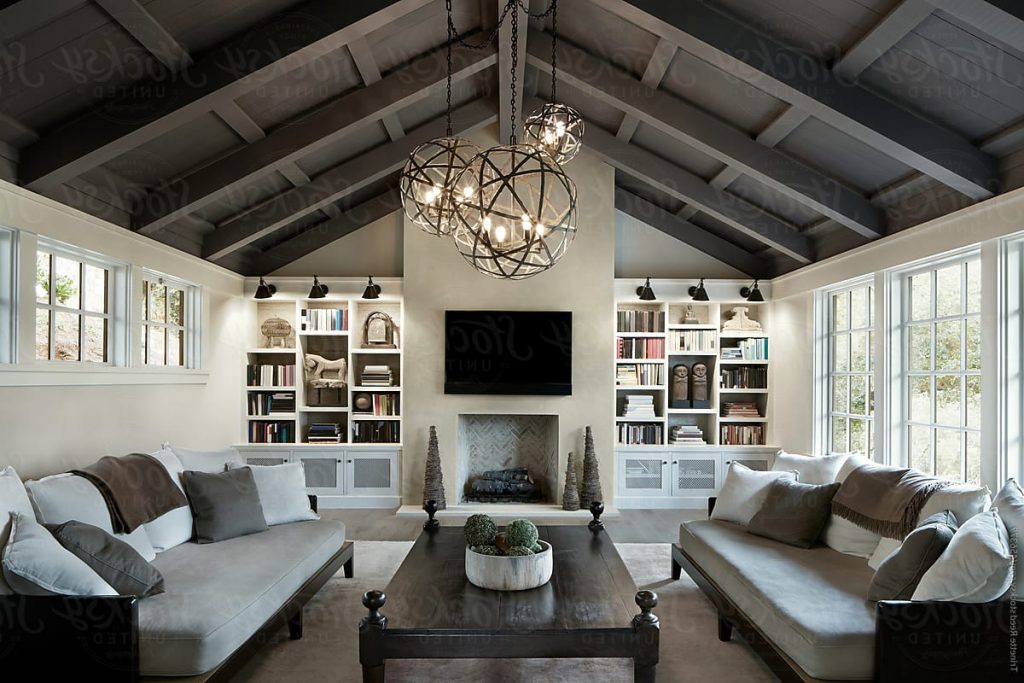Does your home feel small and cramped? If so, you’re not alone. Most houses are smaller than they used to be. And with more people living in them, space requirements have also decreased.
But that doesn’t mean you have to compromise on comfort or style. You can employ several tricks and hacks to make the most of a small home. It all comes down to knowing how to work with what you have, which starts with understanding your home. So whether you’re remodeling your existing home or building one from scratch, this blog got you covered.
How to use every inch of space in a small home
As a homeowner, it’s vital to use every inch of space in your home efficiently. One way to do this is utilizing storage solutions such as reach-in closets. This type of closet features a pass-through doorway that allows items to be stored inside without taking up valuable floor space. Another way to make the most of your home’s space is by utilizing focal points. This means placing items in spots that will draw attention and allow them to be used more easily. One example of a focal point is a fireplace or living room window.
In addition, using furniture with versatile configurations can help you maximize your home’s flooring and storage capacity. For instance, consider purchasing modular seating options that can be moved around as needed. And if you have limited closet space, use cabinets instead to store belongings.
Another way to utilize every inch of space is by combining laundry and pantries. Incorporating both spaces into a single area can save valuable floor space and make your home more efficient. Another idea is to utilize vertical space by using shelves and hanging racks. Using these two simple accessories saves precious floor space and makes your home look organized and spacious. Consider installing cabinets and drawers that extend to the ceiling. By strategically placing these storage pieces, you can maximize the space in your home and make it look more organized and spacious.
Making the most of your walls and ceilings
When it comes to small home remodeling, one of the most effective ways to maximize space is to use your walls and ceilings. Going vertical allows you to create additional storage and display space without sacrificing valuable floor space. Shelves are a great way to add storage space to your walls. You can install shelves in any room, from the living room to the bathroom. Use floating shelves for a minimalist look, or install built-in shelves for a more permanent solution.
Wall-mounted organizers, such as hooks, baskets, and racks, can help you keep your belongings off the floor and out of the way. Consider using a pegboard in your garage or workshop to keep tools organized and within easy reach. If you need a workspace but don’t have room for a traditional desk, consider installing a wall-mounted desk. This can be a great option for small bedrooms or home offices.
If you have high ceilings, consider using that space for storage. Install overhead shelving or hanging organizers to keep items you don’t frequently use out of the way. If you have a garage or workshop, consider installing a ceiling-mounted storage system to keep things like bicycles, skis, and other sports equipment off the floor.
The power of multipurpose furniture: Combining functionality and style
Multipurpose furniture is a game changer when it comes to small home remodeling. These versatile pieces are designed to serve multiple functions, combining functionality and style in a single package. Here are some examples of multipurpose furniture and how they can be used to maximize space in your small home:
- Sofa beds: A sofa bed is a great way to make the most of your living space. During the day, it serves as a comfortable place to sit and entertain guests. It can be transformed into a cozy bed for overnight guests at night.
- Storage ottomans: A storage ottoman can serve as a footrest, a coffee table, and additional storage space. Use it to store extra blankets, pillows, or even board games.
- Convertible dining tables: A convertible dining table can be used as a small table for everyday meals and then expanded to accommodate guests when needed. This can be a great option for small kitchens or dining rooms.
- Murphy beds: A Murphy bed is a bed that folds up and stores vertically against a wall, freeing up valuable floor space during the day. It can be used in a small bedroom, home office, or living room.
- Nesting tables: Nesting tables are small tables that can be stacked together when not in use. They are great for small living rooms or bedrooms where space is at a premium.
- Storage beds: A storage bed has built-in drawers or other storage compartments underneath the mattress, allowing you to store clothing, shoes, or other items without taking up additional space in the room.
- Modular furniture: Modular furniture can be arranged in various ways to suit your needs. For example, a modular sofa can be placed in different configurations to accommodate different group sizes or to make the most of a small living room.
Using lighting to create the illusion of more space
Lighting is a crucial element in any home, but it’s particularly important for small home remodeling. Using lighting strategically, you can create the illusion of more space and make your home feel brighter and more inviting. Here are some tips for using lighting to maximize space in your small house:
- Natural light: Natural light is the best way to create the illusion of more space. Make sure your windows are clean and unobstructed and consider adding sheer or lightweight curtains to let in as much natural light as possible.
- Mirrors: Mirrors are a great way to reflect light and create the illusion of more space. Hang a large mirror on one of your walls, or consider using a mirrored backsplash in your kitchen or bathroom to make the area feel brighter and more open.
- Task lighting: Task lightings, such as under-cabinet lighting in the kitchen or a reading lamp in the living room, can help create a sense of depth and dimension in a small space.
- Recessed lighting: Recessed lighting is a great way to create a sense of height in a room. Install recessed lighting along the perimeter of your ceiling to create a soft glow that will make your ceiling feel higher.
- Accent lighting: Accent lightings, such as wall sconces or picture lights, can help create visual interest in a small space. Use accent lighting to highlight artwork or architectural features in your home.
- Pendant lighting: Pendant lighting is a great way to add visual interest and create a focal point in a small space. Pendant lighting in your kitchen or dining room adds warmth and ambiance.
- Dimmer switches: Dimmer switches allow you to adjust the brightness of your lights, creating a more flexible and customizable lighting scheme. Use dimmer switches in your living room or bedroom to create a cozy and inviting atmosphere.
Room dividers: Creating separation without sacrificing space
Room dividers are a great way to create separation and privacy in a small home without sacrificing valuable space. Whether you’re looking to create a separate workspace in your living room or divide a large bedroom into two separate areas, there are many different types of room dividers. Here are some ideas for using room dividers in your small home:
- Curtains: Curtains are a simple and affordable way to create separation in a small space. Hang a ceiling-mounted curtain rod and use lightweight curtains to create a sense of privacy in your living room or bedroom.
- Bookcases: Bookcases can be used as room dividers, providing storage space and a visual barrier between different areas of your home. Choose a bookcase with open shelving to create a more open and airy feeling, or choose a bookcase with closed cabinets for added privacy.
- Screens: Screens come in various styles and materials, from simple folding to more ornate decorative screens. They can be used to create a temporary partition in a room or as a decorative element to add interest and texture to your space.
- Sliding doors: Sliding doors are a great option for dividing larger areas, such as a living room or bedroom. They take up less space than traditional swinging doors and can be slid open or closed to create privacy.
- Plants: Plants can be used as a natural room divider, creating a sense of separation without blocking light or airflow. Use large potted plants or hanging planters to create a natural barrier between different areas of your home.
- Shelves: Shelves can create a visual barrier between different areas of your home and provide additional storage space. Use open shelving to create a more open and airy feeling, or opt for closed cabinets for added privacy.
Conclusion
When you think about remodeling your home, it might be easy to focus on your home’s floor plan and layout. But space is more than just a measurement on a blueprint. You can also use it to make your home function better. So when you remodel your home, make sure to maximize the space that you have. Use smart ideas like vertical storage units and room dividers to create more space in your small home.
At Ruggieri and Co., they understand that home remodeling can be a daunting task. So contact them today if you’re looking for some smart storage solutions or ideas on maximizing your space during home remodeling!









Pingback: Maximizing Space: Smart Home Remodeling Ideas for Small Houses – Ruggieri & Co.